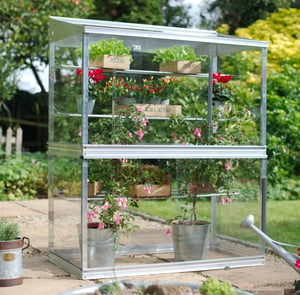Why a Greenhouse is Essential for Serious Gardeners
Why a Greenhouse is Essential for Serious Gardeners
Blog Article
Greenhouse gardening is one of the very most satisfying ways to grow crops year-round, but it takes cautious planning and techniques to make sure success. With managed situations, you are able to foster plants no matter outside weather, but it requires the proper methods to produce an ideal environment within your greenhouse.Here are a few essential recommendations to help your crops prosper through the year.

Focus on Temperature Control
Sustaining the proper heat is crucial for greenhousegardening. Crops flourish in various heat stages depending on the type, therefore it's important to check and change temperatures accordingly. During cooler months, buy trusted greenhouse heater or efficiency systems to maintain warmth. Use computerized ports or supporters in summertime to prevent overheating, as temperatures over 85°F can tension flowers and stop their growth. Pairing these methods with a straightforward thermometer allows you to maintain a constant environment.
Manage Humidity Levels
While greenhouses naturally keep larger humidity levels, a lot of water can inspire shape or form growth. For a healthy harmony, calculate moisture frequently utilizing a hygrometer. Shoot for around 50-70% general moisture, adjusting with appropriate ventilation techniques or even a dehumidifier if needed. Also, space crops properly guarantees better air circulation, reducing the danger of fungal diseases.
Choose the Right Plants
Not totally all flowers are ideal for greenhouses. To maximise produce and accomplishment, select crops that align properly with the summer season and your greenhouse conditions. During cooler weeks, grow crops like lettuce, kale, or broccoli, which thrive in a colder environment. Warm-weather crops like tomatoes, cucumbers, and peppers blossom in the spring or summer within higher temperatures. Mixing complementary plants also helps develop biodiversity and naturally deters pests.

Use Quality Soil and Fertilizers
The caliber of your land immediately affects place growth. Choose a nutrient-rich earth combine specifically made for greenhouse plants. Enrich your planting bedrooms with normal matter like compost to enhance fertility. Regularly feed your plants with fertilizers suited with their needs—some flowers may possibly involve high nitrogen for leafy development, while the others succeed with potassium-rich mixes for fruit development.
Practice Integrated Pest Management
Pests will get their way into even the most managed greenhouses. Add useful bugs like ladybugs to target harmful pests such as aphids naturally. Check crops often and remove any pests physically if identified early. Consider natural or chemical remedies as a last resort but use them infrequently to avoid damaging beneficial germs and organisms.
For more details you should click on this particular link greenhouses. Report this page